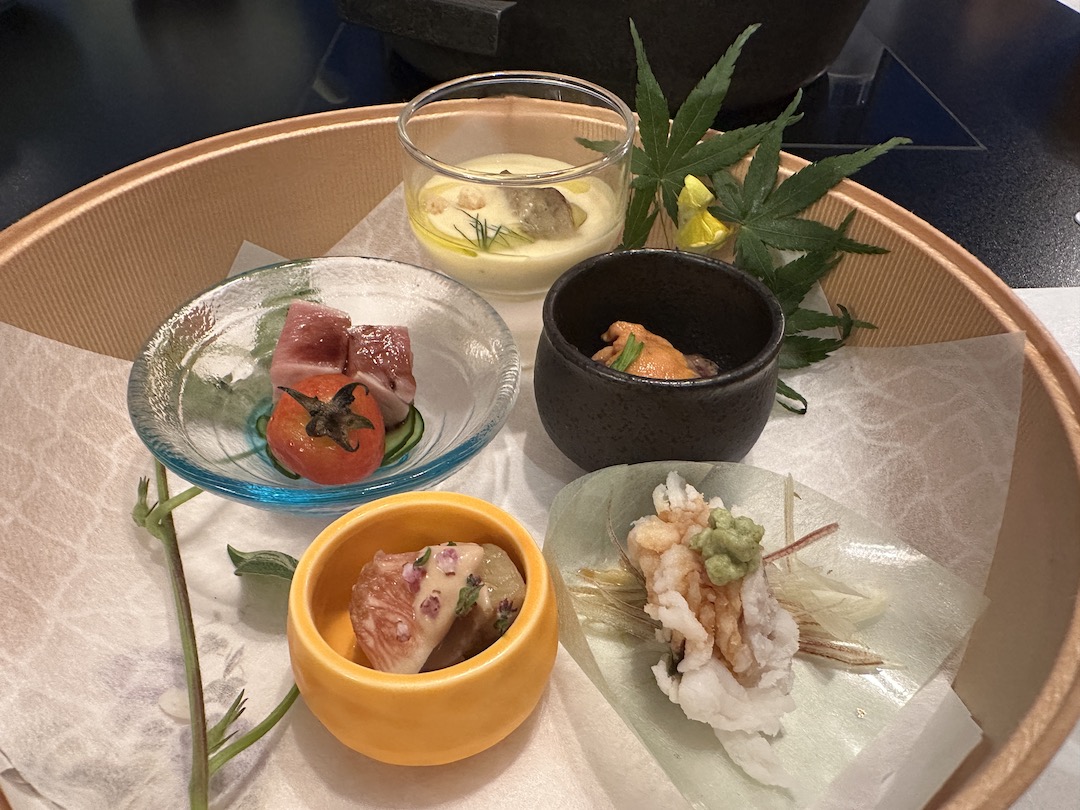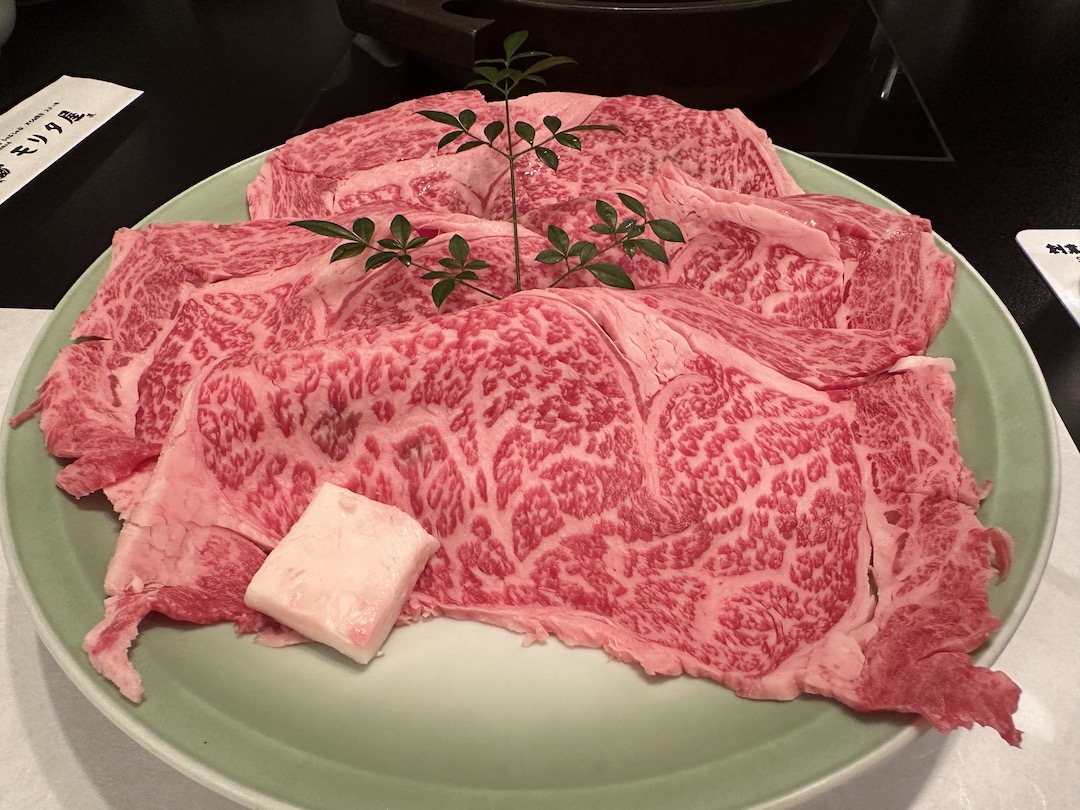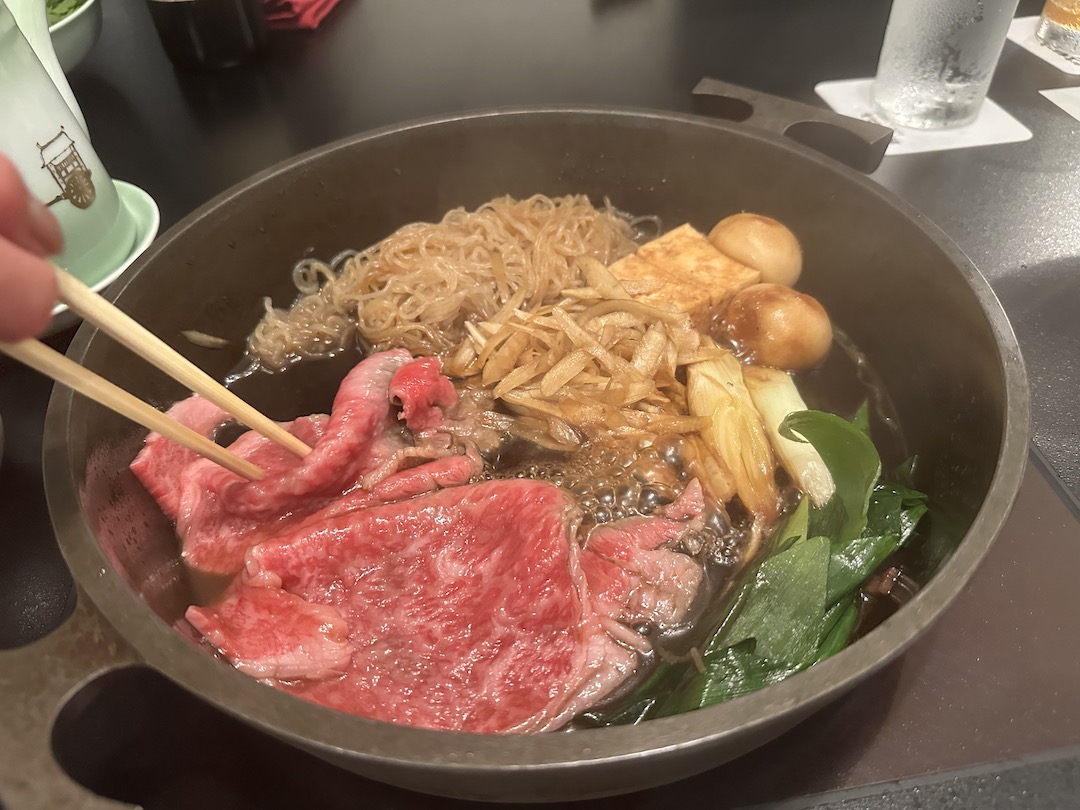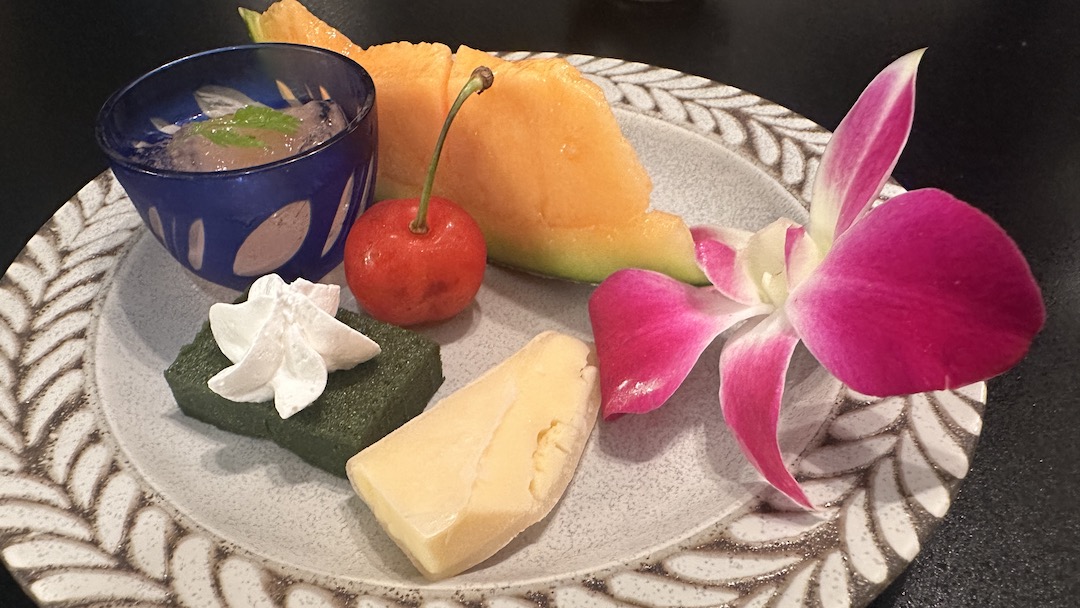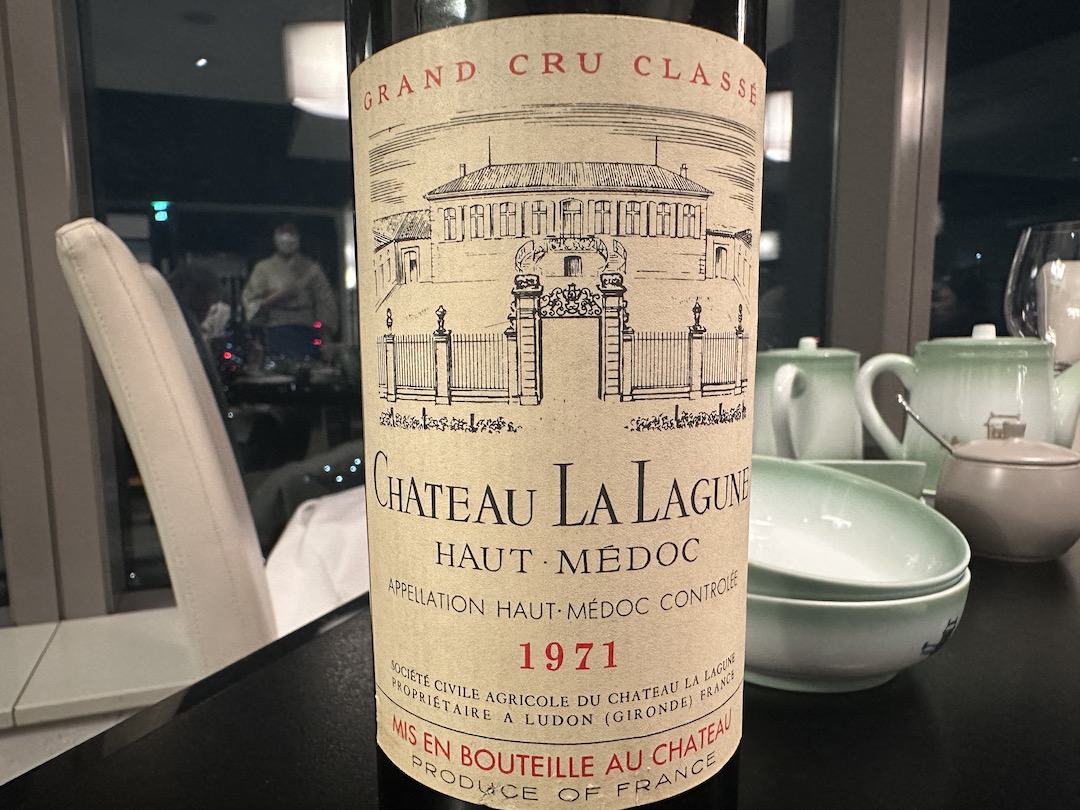Browse using the new Vinous website now. Launch →
Printed by, and for the sole use of . All rights reserved © 2015 Vinous Media
100-0005 Tokyo
Chiyoda City
Marunouchi
2 Chome−4−1 丸ビル35F
Tokyo, Japan
BY NEAL MARTIN | AUGUST 15, 2025
The Food:
Cold corn soup, sea urchin and beef in jelly
Skin-baked pike conger with Japanese ginger, fig and eggplant in sesame vinegar
Medium fatty tuna with grilled tomato and balsamic sauce
Par-boiled beef sushi with sea urchin
Seared beef sushi with caviar
Abalone, winter melon and okra with white vinegar
Sukiyaki hot pot – A5 Japanese black beef with tofu, leeks (with and without egg yolk)
Miso with Kyoto Koshihikari rice
Dessert
The Wine:
| 1971 La Lagune | 93 |
It’s my final night in Japan and I have a free evening without a restaurant reservation. There’s no table with my name on it. This induces a nauseous feeling of being in a gastronomic utopia with nowhere to go. I’ll be on the return flight tomorrow dreaming of dishes I could have eaten. Then, I recall spying Moritaya out of the corner of my eye upon leaving Sens & Saveurs. Online reviews seem positive. I fancied taking in that stunning view over Tokyo again. Fortunately, they have a seat and no qualms about me bringing my own bottle (without knowing who I am or what I do).
As it turns out, the view across the metropolis is even more staggering than before since a thunderstorm rolls in from the north, flashes of lightning striking buildings around us every few seconds. From our window-side table, we simply gaze outside watching nature in action, the sky rumbling like an empty stomach, the Imperial Palace far below pummelled by the storm until it passes 30 minutes later.
Moritaya is a fairly well-known small chain of restaurants, founded in Kyoto in 1898. It is well regarded though not garlanded with Michelin stars or cultdom, which means reservations are relatively straightforward to obtain and prices are friendly. Moritaya specialises in wagyu from Kyoto, so this is not a place to come with your vegetarian friend. The restaurant offers various set menus of shabu-shabu (where cuts of meat are boiled) and sukiyaki (where meat is grilled). We opt for the latter, as I find that shabu-shabu tends to leech a little flavour from the meat.
The interior is spacious and modern, floor-to-ceiling windows on two sides making the most of its lofty location. This being a weekend in the financial district, only around half of the tables are occupied, not that it really detracts from the atmosphere. One aspect that I very much appreciate here is that the restaurant provides photographs of the dishes so you know exactly what you are ordering. Therefore, if your Japanese amounts to “sushi” and “arigato,” don’t let that put you off coming to Moritaya.
I am stunned by the quality of dishes from start to finish. Hey, this is Japan, the culinary apotheosis of the world. This is where the country excels, providing outstanding cuisine at affordable prices. I savour every morsel. Moritaya offers diners a journey into traditional Japanese dishes and ingredients whilst keeping things relatively simple. This is the place I might take an inquisitive but not adventurous non-Japanese diner.
Cold corn soup, sea urchin and beef in jelly.
Abalone, winter melon and okra with white vinegar.
The set menu contains three warm-ups before the main act. These are exceptional. I will not explain each element in detail, as this is an occasion where the photos give you a good idea. The sea urchin is top quality, pure in flavour with perfect texture. The abalone, not something I eat often, marries perfectly with the okra and winter melon.
The A5 Japanese black beef is presented before it is cooked.
The main event is, of course, the wagyu—A5-grade black beef. As is customary, the meat is displayed before cooking so that we can admire its marbling.
Our waiter prepares each dish at our table.
Each table is assigned a waiter attired in a traditional kimono who explains the dishes and then proceeds to cook them at your table. You begin to salivate as the waiter whisks the egg yolks until they reach the perfect consistency.
Sukiyaki hot pot.
Some of the cuts are cooked with these freshly whisked egg yolks and served in a clay pot, while others are prepared with a soy-based sauce poured from a teapot. My God, this might be the most delicious thing I ate in 2024. The meat melts in your mouth, the yolk lending sweetness and umami. Another cut is served with tofu, leeks and parsley. If I were forced to eat this for the rest of my days, I would shrug and say, “Fine.”
Dessert.
I’m already satiated, but the miso soup served with Koshihikari rice from Kyoto actually has a pleasant tanginess and sets the palate up for dessert—melon, cheese and Japanese nori. It’s a bit of an odd combination, but it seems to work.
In terms of wine, a friend had given me a bottle the previous evening, and this seemed a perfect opportunity to enjoy it. The 1971 La Lagune is a vintage I have encountered a couple of times before, but this is the best example. It has an old-school bouquet with earthy black fruit, undergrowth, tobacco and subtle desiccated orange peel. More red fruit builds with aeration. The palate is medium-bodied and fully mature, but this bottle is more finessed than previous ones, with a delectable cedar-tinged finish that has just the right amount of sapidity. Nothing pretentious, just completely delicious.
Moritaya is highly recommended as a cut-above sukiyaki or shabu-shabu restaurant with a central location, astonishing views, outstanding service and most of all, fabulous dishes from start to finish.
© 2025, Vinous. No portion of this article may be copied, shared or redistributed without prior consent from Vinous. Doing so is not only a violation of our copyright but also threatens the survival of independent wine criticism.
You Might Also Enjoy
Vinous Table: Maison Fujiya, Neal Martin, August 2025
Vinous Table: Uni Murakami, Hokkaido, Japan, Neal Martin, August 2025
Vinous Table: Sens & Saveurs, Tokyo, Japan, Neal Martin, August 2025
Japan Gastronomy: A Primer, Neal Martin, April 2024

